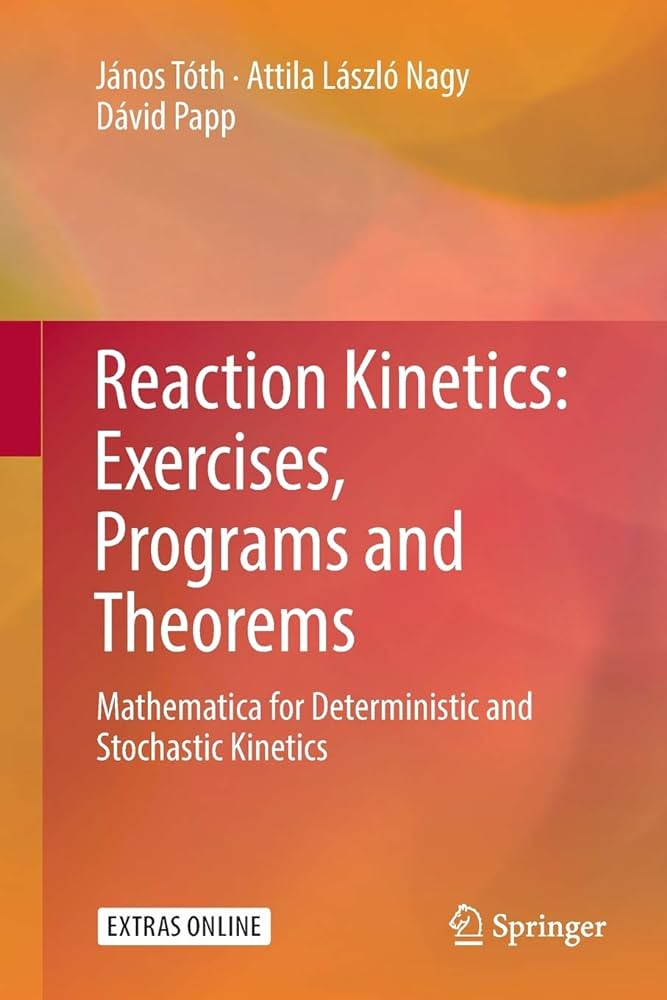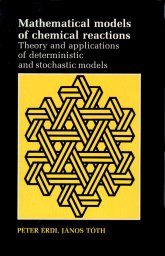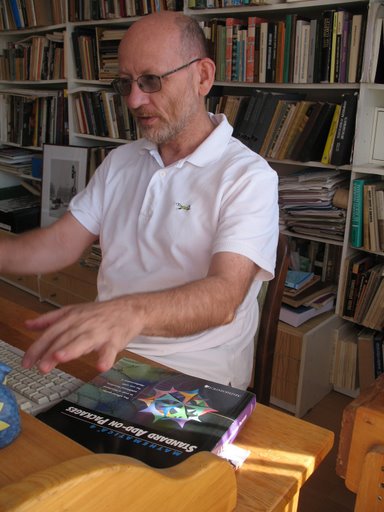| Date |
Speaker |
Title |
Manuscript/paper |
Slides/abstract |
| 17th December |
BAUMGARTNER, L. and Szmolyan, P. (Univ. Wien) |
A Multi-Parameter Singular Perturbation Analysis
of the Robertson Model |
Manuscript |
Abstract |
| 10th December |
Samay Kothari (IIIT Hyderabad), Jiaxin Jin (University of Louisiana at Lafayette), ABHISHEK Deshpande (IIIT Hyderabad) |
Realizations through Weakly Reversible Networks and the Globally Attracting Locus |
Manuscript |
Slides |
| 3rd December |
Lőrinc Márton, Gábor Szederkényi, Katalin M. Hangos (PPKE) |
Modelling and control of interconnected CRNs |
Paper01
Paper02
| Slides |
| 26th November |
Vit PISKOVSKY, Philip Maini (Oxford Univ.): |
Turing patterns for multiple interacting species |
Three species, first. |
Slides |
| 19th November |
Marc R. ROUSSEL, T Soares (University of Lethbridge, Department of Chemistry and Biochemistry): |
Graph-based, dynamics-preserving reduction of (bio) chemical systems |
Paper |
Slides |
| 12th November |
Murad BANAJI (Oxford), Balázs Boros (Vienna U.), Josef Hofbauer (Vienna U.) |
Bifurcations in planar, quadratic mass-action networks
with few reactions and low molecularity |
Manuscript
Bifurcations
Oscillations |
Slides |
| 5th November |
M. A. Vághy, G. SZEDERKÉNYI (PPKE) |
Asymptotic stability of delayed complex balanced reaction networks |
Manuscript |
Slides |
| 29th October |
A Duvall, MA Al-Radhawi, DD Jatkar, E Sontag (Northeastern Univ.): |
Interplay between Contractivity and Monotonicity for Reaction Networks |
Manuscript |
Video |
| 22nd October |
Tomislav PLESA (Cambridge) |
Mapping dynamical systems into chemical reactions |
Manuscript |
|
| 15th October |
Shesha Gopal Marehalli Srinivas, Francesco Avanzini, and Massimiliano Esposito (University of Luxembourg and University of Padova, Italy) |
Characterizing the conditions for indefinite growth in open chemical reaction networks
|
Phys. Rev. E 109, 064153 |
Slides Video |
| 8th October |
Gheorghe CRACIUN (Univ. Wisconsin), Radek Erban (Univ. Oxford) |
Planar chemical reaction systems with algebraic and non-algebraic limit cycles |
Manuscript |
Slides |
| 24th September |
Elisenda Feliu, Oskar HENRIKSSON, Beatriz Pascual-Escudero (Copenhagen) |
Dimension and degeneracy of zeros of parametric polynomial systems with applications to reaction networks |
Manuscript |
Video |
| 17th September |
J. García Galofre^{1}, M. Pérez MILLÁN^{2,3}, A. Galarza Rial^{4}, R. Laubenbachers^{5}, A. Dickenstein^{2,3}
(
1 Dept.Math. and Sciences, U. San Andres, Victoria, Argentina,
2 "Luis A. Santaló" Inst. of Math. Investigations, Buenos Aires,
3 Dept. Math., U. Buenos Aires,
4 Dept. of Exact Sciences, U. Buenos Aires,
5 Lab. for Systems Medicine, Dept. of Medicine, U. Florida, Gainesville, FL, USA.) |
Beyond Boolean networks, a multi-valued approach |
Manuscript |
Slides |
| 7th May |
Badal JOSHI (Calif. State Univ., San Marcos) |
Computation with reaction networks |
Manuscript |
Slides |
| 30th April |
Nicola VASSENA (FU Berlin) |
Mass action systems: two criteria for Hopf bifurcation without Hurwitz |
Slides |
Manuscript |
| 23rd April |
Hamid RAHKOOY (MI of Univ. Oxford), H. Byrne, H. Harrington, A. Ovchinnikov, G. Pogudin and P. Soto |
Algebraic identifiability of partial differential equation models |
Slides |
Manuscript |
| 16th April |
Kelvin KIPRONO, János Tóth (BME) |
Symbolic solution of some kinetic differential equations |
Slides |
Manuscript |
| 9th April |
Francois FAGES, Mathieu Hemery (Inria and Ecole Polytechnique) |
Chemical reaction networks as a programming language: Turing-completeness, compiler of real functions into finite CRNs, and absolute functional robustness. |
Paper and slides |
Preview |
| 2nd April |
Dimitri LOUTCHKO (Univ. of Tokyo) |
Cramer-Rao bound and absolute sensitivity in chemical reaction networks |
Abstract and slides |
Manuscript |
| 26nd March |
Murad BANAJI (MI of Univ. Oxford), Balázs Boros (Univ. Vienna), Josef Hofbauer (Univ. Vienna) |
The inheritance of local bifurcations in mass action networks |
Slides |
Manuscript |
| 19th March |
Jiaxin JIN (OSU), Gheorghe Craciun (WISC), Abhishek Deshpande (IIIT Hyderabad) |
The Dimension of the R-Disguised Toric Locus of a Reaction Network |
Slides |
Paper |
| 5th March |
Bo HUANG, Dongming Wang (Beihang Univ.) |
Using Symbolic Computation to Analyze Zero-Hopf Bifurcations of Polynomial Differential Systems |
Abstract and Slides |
Manuscript |
| 27th Feb. |
SZEDERKÉNYI Gábor (PPKE) |
Modeling traffic flows with reaction networks |
Slides |
Paper |
| 20th Feb. |
O. O. Aybar, M. SENTURK (Piri Reis Univ.) |
Implementation of a triangular probabilistic distribution
for optimal parametrization of the SEIR model recovery rates with delay |
Programs |
Chaos 33, 093137 (2023) |
| 13rd Feb. |
Nicolette MESHKAT (SCU) |
Identifiability and Indistinguishability of Linear Compartmental Models |
|
Slides |
| 6th Feb. |
Josef HOFBAUER (Univ. Vienna) and Balázs Boros (Univ. Vienna) |
Mass action systems with many limit cycles |
|
|


